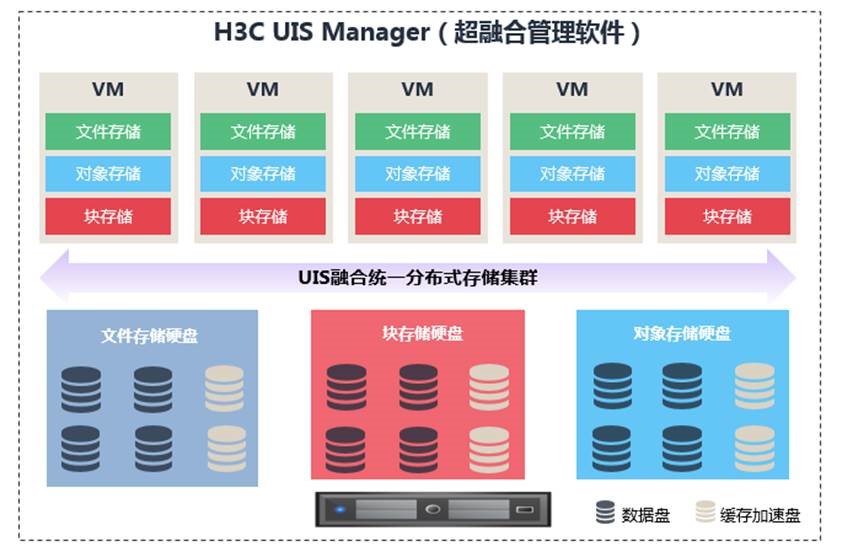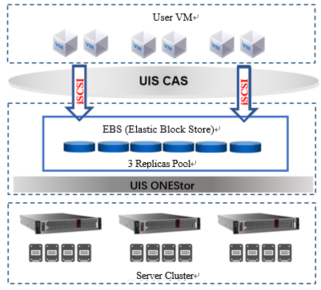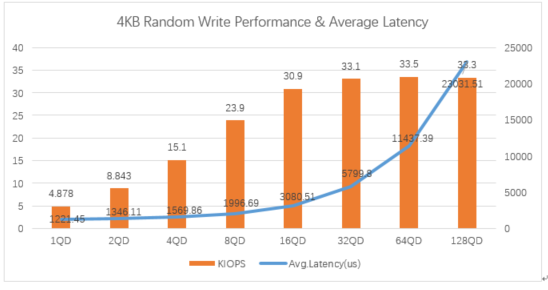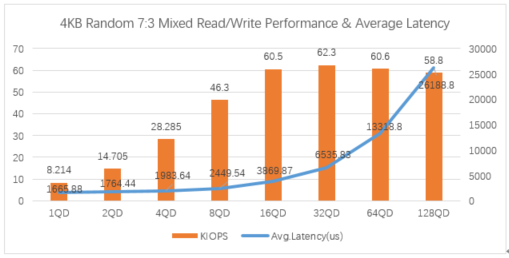

The hyper-converged infrastructure (HCI), by means of software-defined computing, storage and networking, integrates such resources as computing, storage and network in one server device to achieve extension of modular elastic resources and form a unified resource pool. Compared with traditional IT infrastructure, HCI, with its superiorities of high integration, fast deployment, and convenient operation and maintenance, has become the preferred choice for an increasing number of enterprise users to promote their digital transformation.
The HCI-based storage service mainly uses a typical distributed storage infrastructure. Compared with the traditional disaggregated infrastructure, HCI uses technologies such as Linux Cgroup to isolate the computing power of the storage service from the system. In this way, the storage service runs in a more lightweight manner and the performance parameters better match the hardware resources.
Storage services usually include block storage, file storage, and object-based storage services. Block storage and file storage services are latency-sensitive and are demanding on storage performance and reliability, carry some key services of the users, and typically adopt all-flash storage configuration. The object-based storage service is used for backup and archiving services and less demanding on latency, and is often deployed in the mode of SSD+HDD mixed storage. Among them, the block storage service is the main scenario of hyper-convergence.
In order to help enterprise users build modern data centers with hyper-converged infrastructure and meet their requirements for business development, Union Memory unites with H3C to create high-performance storage solutions under the hyper-converged infrastructure.
H3C UIS Hyper-converged Management Platform is a software-defined infrastructure solution independently developed by H3C Group for the next-generation enterprise and industry data centers, with which software technologies such as computing virtualization, storage virtualization, network virtualization, security virtualization, database service, O&M monitoring and management, disaster recovery and backup, and cloud service process delivery can be seamlessly integrated on a general-purpose X86 or ARM server. It enables self-adaptive deployment in the global cloud scenarios in terms of private cloud, hybrid cloud, and edge cloud, provides customers with the fully lossless cloud computing infrastructure for ultimate integration, excellent delivery, minimal clouding, wide scenario and ultra-fast performance, and satisfies the needs of the technical architecture change of data centers for information-based development in any stage, any scale, and any scenario in the next decade.

Fig. 1: Schematic Diagram of H3C UIS Hyper-converged Management Platform
1 Verification Environment
1.1 Hardware Configuration for the Verification
|
Type |
Model |
Hardware Configuration |
|
Server |
2U2 Channel Server |
CPU: Intel(R) Xeon(R) Gold 5318Y CPU @ 2.10GHz |
|
Memory: 12*16GB |
||
|
Memory Controller: Support RAID 1 (System Disk) |
||
|
Hard Disk |
System Disk |
2*480GB SATA |
|
Data Disk |
4*3.84T NVMe SSD (Union Memory UH711a SSD) |
|
|
Network Card |
Network Card |
Network Card: 2*2 Ports 10GE Ethernet Card 1*4 Ports 1GB Ethernet Card |
|
Exchange |
10GE Exchange |
48 Ports 10GE Exchange |
|
Note: The laboratory uses 3 servers, each with 4 data disks, optional configuration depending on the actual number of disks (Currently support NVMe disks in 512B sector only). |
||
1.2 Software Configuration for the Verification
|
Type |
Model |
Version |
|
Storage Software |
H3C UIS Hyper-Converged Management Platform |
V7.0 (E0750P10) |
|
FIO |
IO Testing |
3.18 |
|
SAR |
Network Monitoring |
10.1.5 |
|
IOSTAT |
Disk-side IO Statistics |
10.0.0 |
|
MPSTAT |
CPU Utilization |
10.1.5 |
1.3 Testing Environment Planning for the Verification

2 Verification Method
Step 1: In the block storage testing, the storage pool uses 3 replicas and 6 VM clients are configured. Create 6*100GB block devices in the Default Data Pool and add them to the iSCSI network storage pool, and then add the block devices in the iSCSI network storage pool to VM before performing I/O tests.
Step 2: Before I/O testing, monitor the I/O, CPU and network on the server and client, and collect data every 2 seconds, with the corresponding commands as follows:
# iostat -xmt 2 >> iostat.log &
# mpstat -P ALL 2 >> mpstat.log &
# sar -n DEV 2 >>sar.log &
Step 3: Run the fio task background monitoring service on the tested clients, and concurrently assign IO to 6 block devices (select 1 of the clients to perform the IO assignment). All devices must be pre-written before the official testing. fio reference commands are as follows:
# fio --server & // Enable the background monitoring service on all clients
# fio --client=host.list fio.job // Assign IO to all clients
Step 4: After Step 3 is completed, collect BW, IOPS and average latency of fio on all clients.
3 Verification Results
The verification results in the H3C UIS block storage scenario are as follows:
3.1 Performance of Union Memory UH711a SSD under 4KB Random Read/Write Scenario


Fig. 3: Performance of Union Memory UH711a SSD under 4KB Random Read/Write Scenario
As can be seen from Fig. 3 that, under 4KB random read/write scenario, when the queue depth ranges from 1 to 32QD, the IOPS of UH711a SSD shows an increasing trend with a small increase in average latency and good overall performance. When the queue depth is more than 32QD, the IOPS increases slightly, and the average latency increases significantly.
Obviously, in the 4KB random read/write scenario, UH711a SSD enables high-performance and low-latency storage services for 32QD and lower scenarios.
3.2 Performance of Union Memory UH711a SSD under 4KB Random 7:3 Mixed Read/Write Scenario

Fig. 4: Performance of Union Memory UH711a SSD under 4KB Random 7:3 Mixed Read/Write
As shown in Fig. 4, UH711a SSD shows its advantage at 32QD and lower under a 4KB random 7:3 mixed read/write performance scenario. The peak IOPS is up to 62.3K at 32QD, and the corresponding average latency is 6535.83us (6.5ms ). When the queue depth is more than 32QD, the IOPS shows a decreasing trend, and the average latency increases significantly.
Under this scenario, UH711a SSD enables the best storage performance for 32QD and lower scenarios.
3.3 Performance of Union Memory UH711a SSD under 128KB Sequential Read/Write Scenario

Fig. 5: Performance of Union Memory UH711a SSD under 128KB Sequential Read/Write Scenario
Fig. 5 shows that, under 128KB sequential read scenario, when the queue depth ranges from 1 to 16QD, the read bandwidth of UH711a SSD shows a linear increasing trend, and the average latency increases slightly. When the queue depth is more than 32QD, the read bandwidth decreases and the average latency increases significantly. Under 128KB sequential write scenario, the write bandwidth of UH711a SSD increases with the increase of queue depth, and the performance of average latency is good with the queue depth ranging from 1 to 32QD.
The above data trends verify that under 128KB sequential read/write scenarios, UH711a SSD has better overall performance at 32QD and lower.
From the field tests of 4KB random read/write, 4KB random 7:3 mixed read/write and 128 KB sequential read/write performance, the ultimate performance and stable function of Union Memory UH711a SSD in H3C UIS scenarios are systematically verified, especially under 32QD and lower scenarios, which enables low-latency and high-performance storage services, and effectively supports the requirements of hyper-converged block storage services for high-performance SSDs.
In the future, Union Memory will continue to cooperate with H3C, to provide users with storage solutions with affordable cost, better performance and more convenient operation and maintenance based on the UIS hyper-converged software platform.